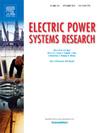Comprehensive design of active damper for suppression of harmonic resonance in renewable energy system
IF 3.3
3区 工程技术
Q2 ENGINEERING, ELECTRICAL & ELECTRONIC
引用次数: 0
Abstract
The integration of renewable energy systems (RES) into power grids has led to harmonic resonance (HR) issues due to impedance interactions, affecting the stability of power systems. Active dampers (ADs) have been proposed to mitigate these resonances by simulating virtual resistances at the Point of Common Coupling (PCC). However, existing AD implementations face challenges in defining clear boundaries for virtual resistance values and accurately realizing the desired external characteristics across a wide frequency range. This paper introduces a virtual resistance design method that leverages the concept of the voltage harmonic amplification ratio (HAR), enabling the quantitative suppression of HR and ensuring effective virtual resistance across varying grid impedance conditions. Additionally, a comprehensive parameter design method is proposed, encompassing the design of filter parameters and current loop controller parameters, while also accounting for the interactions between the hardware and software parameters of the AD to further explore the virtual resistance value range. This enhances the practicality and robustness of the AD system in applications. A DFIG-based wind power system is used as an analysis case to demonstrate the application of the proposed methods, and a controller hardware-in-the-loop (CHIL) experimental platform was constructed to verify the proposed method and design.
求助全文
约1分钟内获得全文
求助全文
来源期刊

Electric Power Systems Research
工程技术-工程:电子与电气
CiteScore
7.50
自引率
17.90%
发文量
963
审稿时长
3.8 months
期刊介绍:
Electric Power Systems Research is an international medium for the publication of original papers concerned with the generation, transmission, distribution and utilization of electrical energy. The journal aims at presenting important results of work in this field, whether in the form of applied research, development of new procedures or components, orginal application of existing knowledge or new designapproaches. The scope of Electric Power Systems Research is broad, encompassing all aspects of electric power systems. The following list of topics is not intended to be exhaustive, but rather to indicate topics that fall within the journal purview.
• Generation techniques ranging from advances in conventional electromechanical methods, through nuclear power generation, to renewable energy generation.
• Transmission, spanning the broad area from UHV (ac and dc) to network operation and protection, line routing and design.
• Substation work: equipment design, protection and control systems.
• Distribution techniques, equipment development, and smart grids.
• The utilization area from energy efficiency to distributed load levelling techniques.
• Systems studies including control techniques, planning, optimization methods, stability, security assessment and insulation coordination.
 求助内容:
求助内容: 应助结果提醒方式:
应助结果提醒方式:


